Katz’s Photography Documents Holocaust Memorials
His newly published photographic book, “My Road to Remembrance,” is a photographic journey and history of more than 100 Holocaust memorials, from Auschwitz to New York.
Robyn Spizman Gerson is a New York Times best-selling author of many books, including “When Words Matter Most.” She is also a communications professional and well-known media personality, having appeared often locally on “Atlanta and Company” and nationally on NBC’s “Today” show. For more information go to www.robynspizman.com.
Dr. Fred Katz is well-known to many for his decades of volunteerism in the Jewish community in Atlanta. Over the last decade, he has spent thousands of hours documenting a personal mission and has completed an important contribution to preserving the memory of those who perished in the Holocaust, as he photographed more than 100 Holocaust memorials around the world.
To accomplish his mission, Katz traveled the world. He shared, “I wrote this book to honor the memory of the six million Jewish men, women, and children, in addition to countless others, who were murdered during the Holocaust. It is vitally important that we never forget what happened so that this never happens again. Hopefully, by visiting these memorials, people will become more empathetic to the suffering endured by the victims and survivors of the Holocaust.
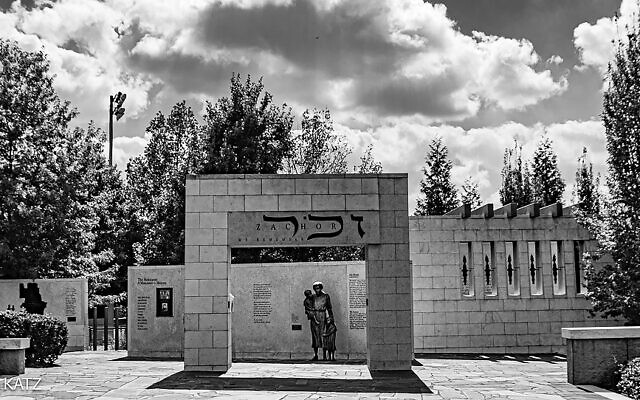
Throughout my travels, I made it a priority to visit these sites. Unfortunately, there were often very few visitors at these significant places. I wanted to change that by making people aware of these memorials and how to visit them.”
His inspiration was multifaceted as he said, “My late wife’s parents had escaped from Germany, just after Kristallnacht, and we visited her father’s hometown of Fulda in 1975. During that trip, we visited the Dachau Concentration Camp Memorial. The following year, we joined a United Jewish Appeal trip of young leaders to the Mauthausen Concentration camp memorial, and then to Israel. That trip literally changed my life. For the past 50 years, I have been visiting and photographing Holocaust memorials around the world and wrote this book so that others could follow my journey.”
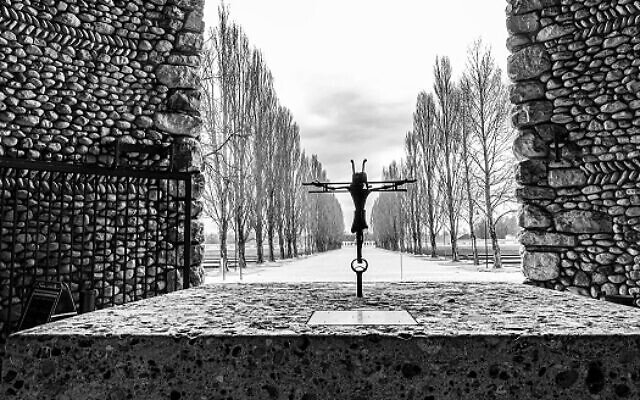
“I have loved photography since I was a kid,” Katz shared, “I remember, as a child, taking over the bathroom of our apartment, to develop rolls of film. Eventually, we moved to a home with a basement, and I could use an enlarger to develop my own prints. After I retired from an active radiological practice, I spent three months at the Rocky Mountain School of Photography honing my skills.”
During his retirement, Katz had the time and the means to do a lot of traveling, which enabled him to write this book. He retired in 1998 and then taught half-time at the Philadelphia College of Osteopathic Medicine. He and his late wife, Doris, traveled the United States in a motorhome in addition to many trips abroad. He added, “There is a saying that “when one door closes, another one opens.” That was what happened to me during COVID. For over an entire year, my wife, Marcy, and I stayed home in Florida, where I spent thousands of hours on my computer sorting through images and writing this book.”
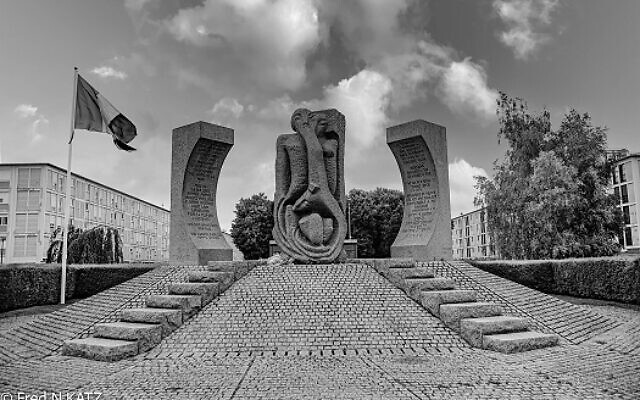
When asked what he hoped readers and the world at-large should learn from this book, he shared, “I discovered that most people don’t even realize that these memorials exist, even in their own hometowns. One example was when I flew to Los Angeles to photograph the Holocaust memorial, I stayed with my cousin for a few days. He was fairly active in the L.A. Jewish community and when I asked him where the memorial was located, his response was ‘I know there is one, but I am not sure where it is.’ So first and foremost, I wish people would visit the memorials in their own cities and wherever they may travel. I recently visited Rio De Janeiro and did some research before we began our trip. I found out their new Holocaust Memorial was opening a few days before we left. Our visit to it was an especially very moving experience. By seeing the sculptures and reading the material, people will also gain empathy and understanding for minority communities.”
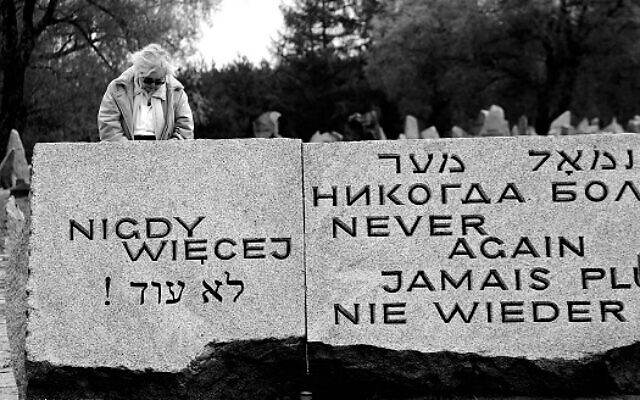
He continued, “Most of the memorials are built when a group of people, usually survivors, or children of survivors, band together to organize the fundraising and construction. Occasionally, governments, whether country or state, initiate the building and financing of the memorials. I believe most are maintained by the community or organization that sponsors them.”
He added, “I have been profoundly moved by many of the memorials I have visited. Of course, Yad Vashem, in Israel, is in a category by itself, as the ultimate memorial to the Holocaust. The concentration camp that affected me most was the Mauthausen Concentration Camp memorial in Austria. I believe the Miami Holocaust memorial and the Liberator Memorial on Liberty Island in New Jersey are the most impressive monuments in the United States.”
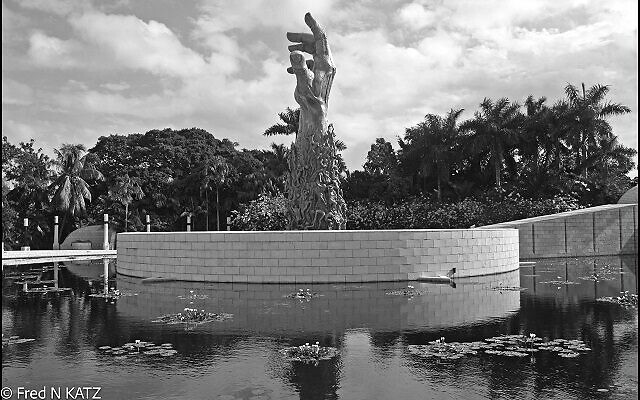
He said, “One of the most inspirational moments during my journey was when I met an elderly woman at the Treblinka Concentration Camp Memorial. She was standing behind a large stone, with the words, “Never Again,” engraved on it. She appeared to be praying. I approached her to ask if she minded that I photographed her. She told me that she was here visiting Treblinka, with a group of German Christians, praying for forgiveness for the murder of six million Jewish people. I learned from that experience and others, that we cannot blame all Germans, or all Poles, for the Holocaust, but only the perpetrators. But we cannot ever forget!”
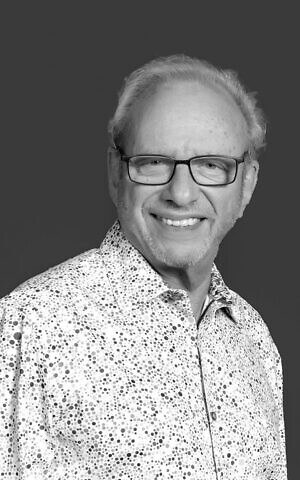
Katz said, “I hope that the readers will be interested enough to actually go and visit some of these very important and poignant memorials, to pay homage to the millions of people that were murdered during the Holocaust, and to realize that antisemitism and racism can lead to catastrophic results.”
Meet Dr. Fred Katz, at 11 a.m., Sunday, Oct. 22, at The Breman Museum where he will be presenting his photographs, telling stories, and signing books as part of the ongoing “Bagels and Books at The Breman” series. Museum members are free, non-members $12, this includes all exhibitions. Seating is limited; preregistration at TheBreman.org.
- Arts and Culture
- Community
- Robyn Spizman Gerson
- Dr. Fred Katz
- Holocaust memorials
- photography
- Kristallnacht
- Dachau Concentration Camp
- United Jewish Appeal
- Mauthausen
- Rocky Mountain School of Photography
- Philadelphia College of Osteopathic Medicine
- Yad Vashem
- Liberator Memorial
- Treblinka
- Bagels and Books at The Breman



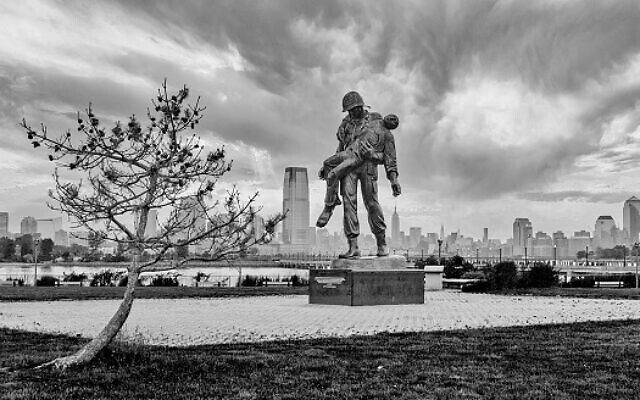
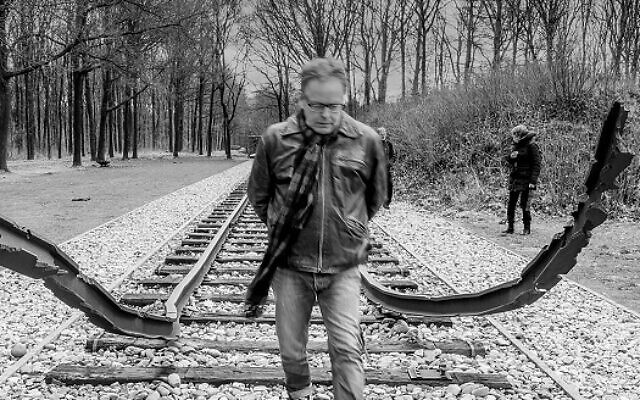
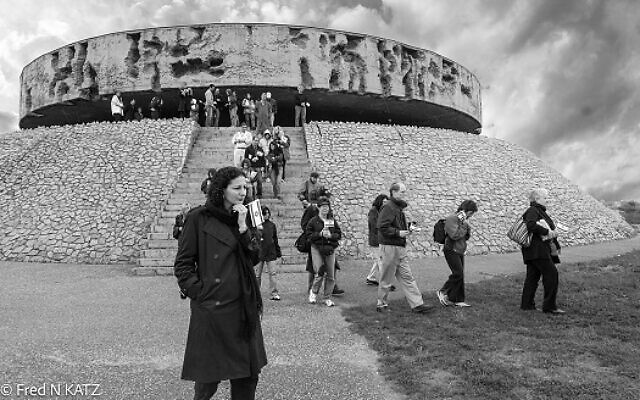
comments